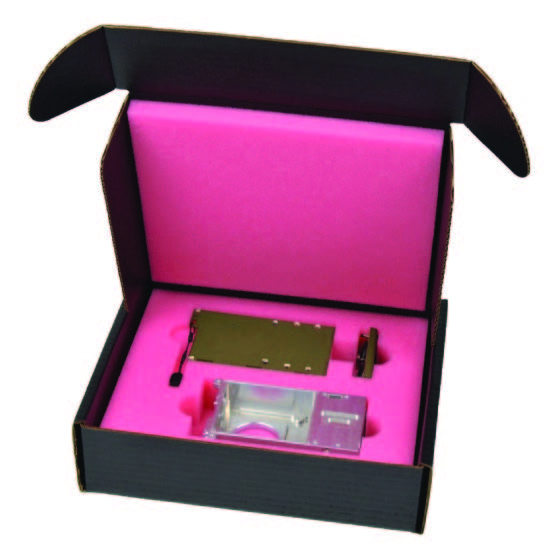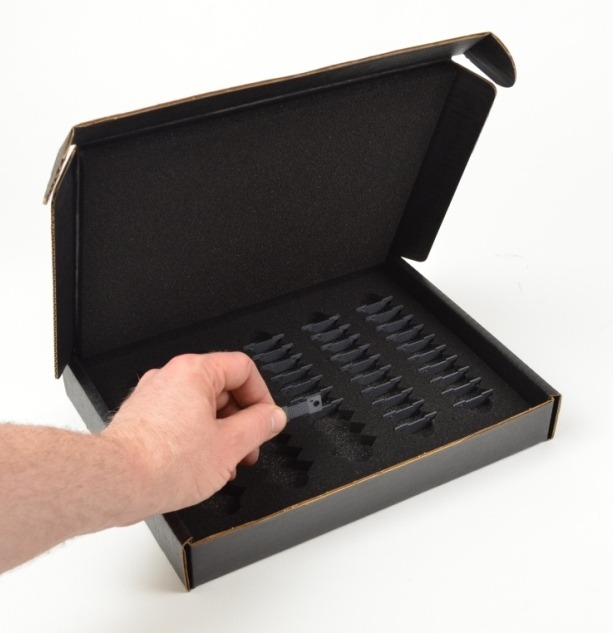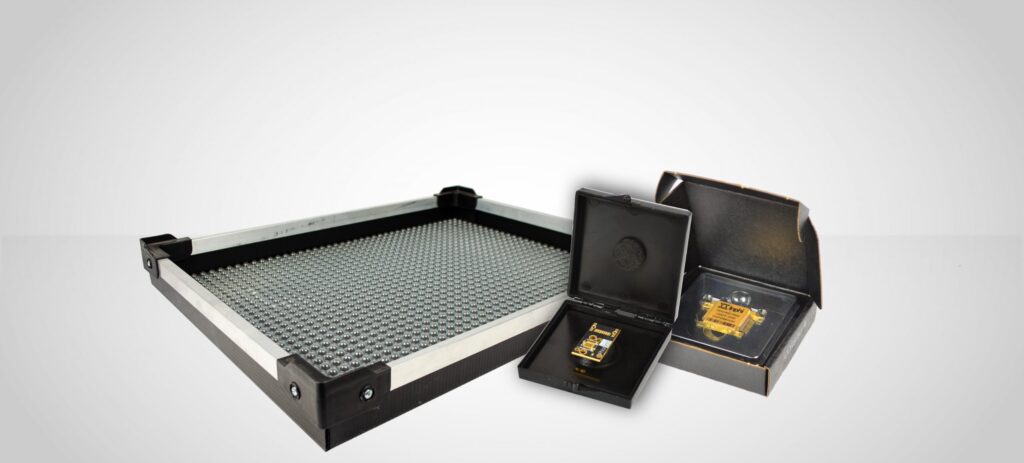A GUIDE TO CORRECT USE OF ANTISTATIC FOAMS
History
Pink ESD foam has been a staple in ESD packaging since its creation in the seventies. It is a great product that meets many requirements for many applications. Generally used as a cushioning aspect of a package or work surface, pink foam became a “solution” for many shortcomings. That said, there is confusion about the ant-static nature of the foam and how long it lasts. Pink anti-static foams have a shelf life. Once that shelf life is gone, pink foam can become quite dangerous sensitive components and the manufacturing environment. When walking through an EPA (ESD Protected Area), the using, or misusing these foams is the most commonviolation of standard ESD practices.
As it relates to ANSI/ESD S20.20, ANSI/ESD S541 tells us in 6.1 and 6.2 that packaging (in our case, pink foam) used in- and outside an EPA must have certain characteristics.
6.1 Inside an EPA
Packaging used within an EPA (that satisfies the minimum requirements of ANSI/ESD S20.20) shall be:
- Low charge generation.
- Dissipative or conductive materials for intimate contact.
- Items sensitive to < 100 volts human body model may need additional protection depending on application and program plan requirements.
6.2 Outside an EPA
Transportation of sensitive products outside of an EPA shall require packaging that provides:
- Low charge generation.
- Dissipative or conductive materials for intimate contact.
- A structure that provides electrostatic discharge shielding.

Low charge generation is one of these characteristics of the materials used. S541 also states that for "intimate" or immediate contact of sensitive products, it has to be dissipative or conductive. Foam is used for "intimate contact" in most applications. Which is why it is so crucial to understand what makes Pink ESD foam static dissipative and why it has a shelf life. When that shelf life is expired, you're left with regular foam. So we can better understand the “shelf life,” we first need to look at regular foam in general, ESD foam, and applications where it can and cannot be used.
Foam Is Great For Cushioning
As a substrate, regular foam provides fantastic cushioning to protect products from physical damage. The challenge with regular foam is that it's very high on the triboelectric scale and has a high likelihood to produce a static charge. All materials, even conductors, can be tribo-electrically charged. The level of charge is impacted by type of material, velocity of contact and separation, humidity and several other factors. Thus, regular (non ESD) foam is cannot be used in an EPA (ESD Protected Area) environment. Remember, when the ESD properties expire from the Pink ESD Foam, you are left with regular foam.
Pink Anti Static Foam
Considering its high surface area and chemical composition, flexible foam is subject to the acumulation of static charges. This is addressed by the addition of anti-static chemical additives or anti-static surfactants. These additives are usually applied to the foam during manufacture. The pink color is just what the industry decided on to help identify the foam as “ESD” or “Antistatic” materials.
The surfactants used are low molecular weight fatty acids often developed from amides or amines. Surfactants are mobile (blooming) surface modifiers that temporarily change the friction properties between mating surfaces (tribo charging). That’s a pretty substantial statement. Now, let's investigate further to help understand it better. The molecules (in surfactants) in their initial state are unsaturated.
These unsaturated molecular bonds want to absorb moisture. In this unsaturated state, they help lower the coefficient of friction of the foam helping its Antistatic properties. The downside of unsaturated molecules is they want to become saturated. Once the molecule is saturated, the game is up and their antistatic properties are done. How much time does it take for these molecules to become saturated? That varies depending on several factors. Humidity and the environment play a vital role.
The handling of the foam plays a vital role. In reality, there isn't any actual guideline for how long this takes. Most people in the industry determine one year as the magic date to begin testing and others suggest earlier and some later. It comes down to your understanding and your procedures. What works for some will not always work for everyone.
Shelf Life
So now we know why foam has a shelf life. Once the shelf life has gone, foam will not appear any different, but the foam's ESD protective properties will be gone. We have also learned that, based on many factors, shelf life can vary. So what to do?
It's a good thing that the ESD Association has provided us a guide to help address this problem. As it relates to ANSI/ESD S20.20, ANSI/ESD S541 tells us in 6.1 and 6.2 that packaging (pink foam) used both inside and outside an EPA has to meet certain characteristics. One of the characteristics is that materials must be low charge generating. It also points out that for intimate contact of sensitive products, it must be dissipative or conductive.
Foam is often used for intimate contact of sensitive products. You see foam lining racks and shelves, in bottom of drawers, in totes and as separators between stacks of circuit boards or assemblies. That’s pretty self-explanatory. We cannot have any charge generating packaging material in an EPA or in some scenarios outside of an EPA.
But now we have an issue. We have outlined and explained why these foams may or may not be static safe. If the foam still meets its material specifications, we’re all good to go. If the properties of pink foam are gone, what do you do? Fortunately for us, we can turn to the ESD Association for guidance. More specifically, ANSI/ESD S541. In section A.6:
The static control properties of some packaging materials can deteriorate with time and use. Compliance Verification of static control packaging properties should be part of the ESD control compliance verification plan.
A6 Compliance Verification
This is a vital statement. It both validates that material deteriorates over time, it also says that we must develop a verification process to ensure the properties are still present. ESD TR53-01-06 is another refernce to validate this. This document discusses compliance verification of ESD protective equipment and materials.


Package Compliance Verification
Make sure to confirm packaging materials as recommended in ANSI/ESD S541 (Packaging Materials for ESD Sensitive Items). Because of the big variety of packaging materials, users should come up with their own packaging compliance verification plan.
FOD (Foreign Object Debris)
One more item for your consideration in the use of foam for intimate contact with electronics is concerns of foreign object debris or FOD. All foams, regular non-ESD foams, antistatic foams, and conductive foams will shed particulates to varying degrees. Some foams are much better than others, but all foams will generate some FOD. If you are wondering about FOD when handling devices, use other options to prevent contact with foam.
Summary
So there you have it. We have discovered that you may have a problem if you are using Pink ESD Foam.
- Pink ESD Foam has a shelf life
- The shelf life of that foam is unknown
- When foam loses its ESD properties, it's unacceptable in, and potentially out, of an EPA
- If you are going to use Pink ESD Foam, it should be a short term solution
- Consider the potential FOD issues with foam
- Have a quality program in place if you are going to use foam long term
Thanks to the ESD Association, there is a potential solution to the issue of limited shelf life. Compliance verification can make an antistatic foam viable. If you don't have compliance verification, or if it's not practical, then other more permanent options should be chosen.
